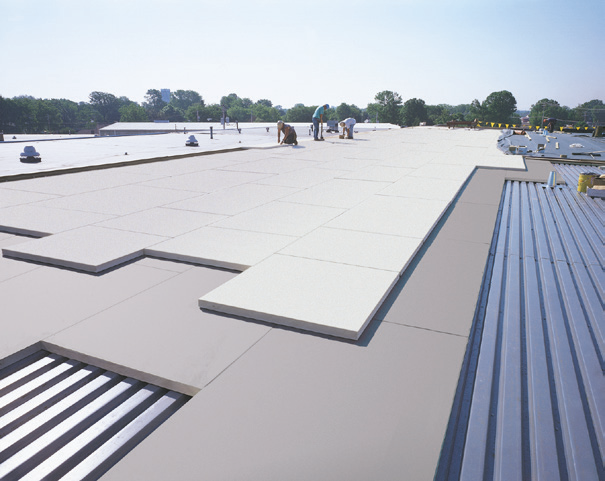To minimize the effects of thermal bridging, Atlas strongly recommends the use of multiple layers when the total desired or specified polyisocyanurate (polyiso) R-value requires an Atlas 1ACFoam® thickness greater than 2.7ʺ.
TYPICAL 4ʹ× 8ʹ POLYISO BOARD
Top layer installed with a 2′ stagger and 2′ offset in relation to the bottom layer.
BENEFITS
- Reduced thermal loss at insulation joints
- Helps prevent building generated moisture from condensing on the underside of the roofing membrane
- Reduced thermal bridging
- Minimizes potential for membrane splitting in built up roofing (BUR) systems

When a multiple layer insulation application is used, the joints of the insulation boards in the top layer should be vertically staggered and offset a minimum of 6.0ʺ from the joints in the insulation boards in the layer below.
In a double or multiple layer configuration, the layer next to the deck must meet the polyiso roof insulation manufacturer’s minimum thickness requirement for fire performance as designated by FM 4450 / UL 1256 / ULC-S126. The upper layer must meet the FM or UL/ULC applicable wind uplift classification.
Atlas Technical Bulletin TB-5—ACFoam® Application Update 1 Including, but not limited to: ACFoam®-II, ACFoam®-III, ACFoam® Supreme, ACFoam® -HD CoverBoard, ACFoam® Recover Board, ACFoam® Nail Base & ACFoam® CrossVent®




